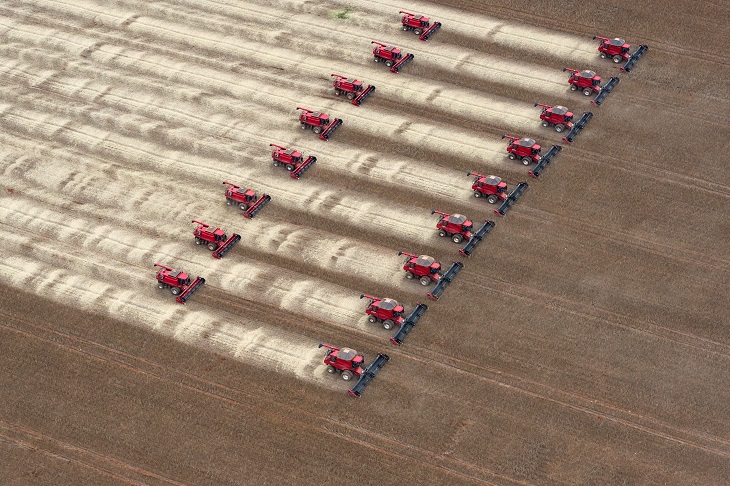When livestock farming became unfashionable and it was said palm oil was unsustainable, soybeans stepped up to become the darlings of the alternate food world.
Soy was the key to life without meat – vegetarians and vegans declared. Tofu was delicious in spite of having no taste, others said. As for soy milk, the hordes of hipsters and blue and green-haired eco-activists in love with their ‘chai-soy lattes’ ensured no coffee shop could fail to offer it.
Even the advent of genetically modified soybean varieties failed to stop the love affair. Soybean oil is currently the second most consumed vegetable oil in the world.
That love might soon be tested. A University of California Riverside study published in the journal Endocrinology in 2020 found that feeding soybean oil to mice may lead to increases in obesity and diabetes, and could also affect neurological conditions like autism, Alzheimer’s disease, anxiety, and depression. It is unknown how or if this translates to humans.
The same group previously found soybean oil induces more obesity, diabetes, insulin resistance, and fatty liver than coconut oil or fructose. They identified pronounced effects of the oil on the hypothalamus, which regulates body weight, body temperature, is critical for reproduction and physical growth, and response to stress. It appears a number of genes in mice fed soybean oil did not function correctly, including the one that produces the hormone oxytocin. In soybean oil-fed mice, levels of oxytocin in the hypothalamus went down.
This, and the wider of body of research into soybeans by other entities, raises an interesting question: if soy has the same effects in humans as it does in mice, does it deserve its hero status? It might be unproven at the moment, but could soybean consumption be contributing to social changes, particularly in males?
There are many factors at work. For example, it has long been known that soybeans contain phytoestrogens known as isoflavones. These mimic the actions of the female hormones and can have a feminising effect. The term ‘soy-boy’ is a pejorative to describe men perceived to be lacking masculine aspects or who adopt effete characteristics.
Plant-based alternatives to dairy milk, including soy, are low in protein, vitamins, and minerals. Vitamin B12 only occurs in animal products. Unless the dairy alternative is supplemented, consumers risk becoming deficient. That would aggravate any ‘soy-boy’ signs.
Although we do not yet have conclusive proof, some speculate that conditions such as autism, anxiety, and depression may be more likely in soy consumers. Low oxytocin levels have been linked to autism spectrum disorder and depressive symptoms. Given there is an epidemic of mental health problems including these conditions, might soy be the cause? It is worth asking the question.
In men, oxytocin levels influence libido, penile reflexes, and orgasm. A reduced level has the opposite effect. Perhaps it is no coincidence that the birth rate is declining.
There may be consequences for social activism too. Oxytocin is sometimes referred to as the ‘love hormone’, being associated with trust and relationship building. Are low levels causing activists to resort to personal attack and claim victimhood rather than debate issues on their merits? According to UK market research, soymilk consumers have a ‘strong affinity for veganism’, are socially conscious, and are strongly represented among BLM advocates. The popularity of lattes, which comprise mostly milk, suggests the intake of soymilk is sizeable.
There is an additional irony in all this. Far from being an environmental white knight, soybean production comes at a considerable environmental cost.
Compared to its main rival, palm oil, soy consumes a lot of land. Soybeans require 125 million hectares, or almost 30 per cent of oil crop area worldwide, to supply 28 per cent of the vegetable oil demand. Palm makes up around 40 per cent of the current global vegetable oil supply but occupies only around 5.5 per cent of the total global oil crop area (between 21.5 and 23.4 million hectares). To replace palm oil with the same quantity of alternative oils like soybean would require up to ten times more land.
Soybean production is also expanding, leading to deforestation and displacement of small farmers and indigenous people. This is of most concern in Brazil, the world’s largest producer of soybeans, where there are significant encroachments on the Amazon rainforest to produce soybeans and cattle.
In contrast, the palm oil industry is rapidly becoming sustainable, particularly in the biggest producer Malaysia.
Facts have never been especially important to eco-warriors, but the facts relating to soybeans are starting to become rather awkward. The key question is whether it will require someone who does not consume soy to explain it to them.
Got something to add? Join the discussion and comment below.
Get 10 issues for just $10
Subscribe to The Spectator Australia today for the next 10 magazine issues, plus full online access, for just $10.


























Comments
Don't miss out
Join the conversation with other Spectator Australia readers. Subscribe to leave a comment.
SUBSCRIBEAlready a subscriber? Log in